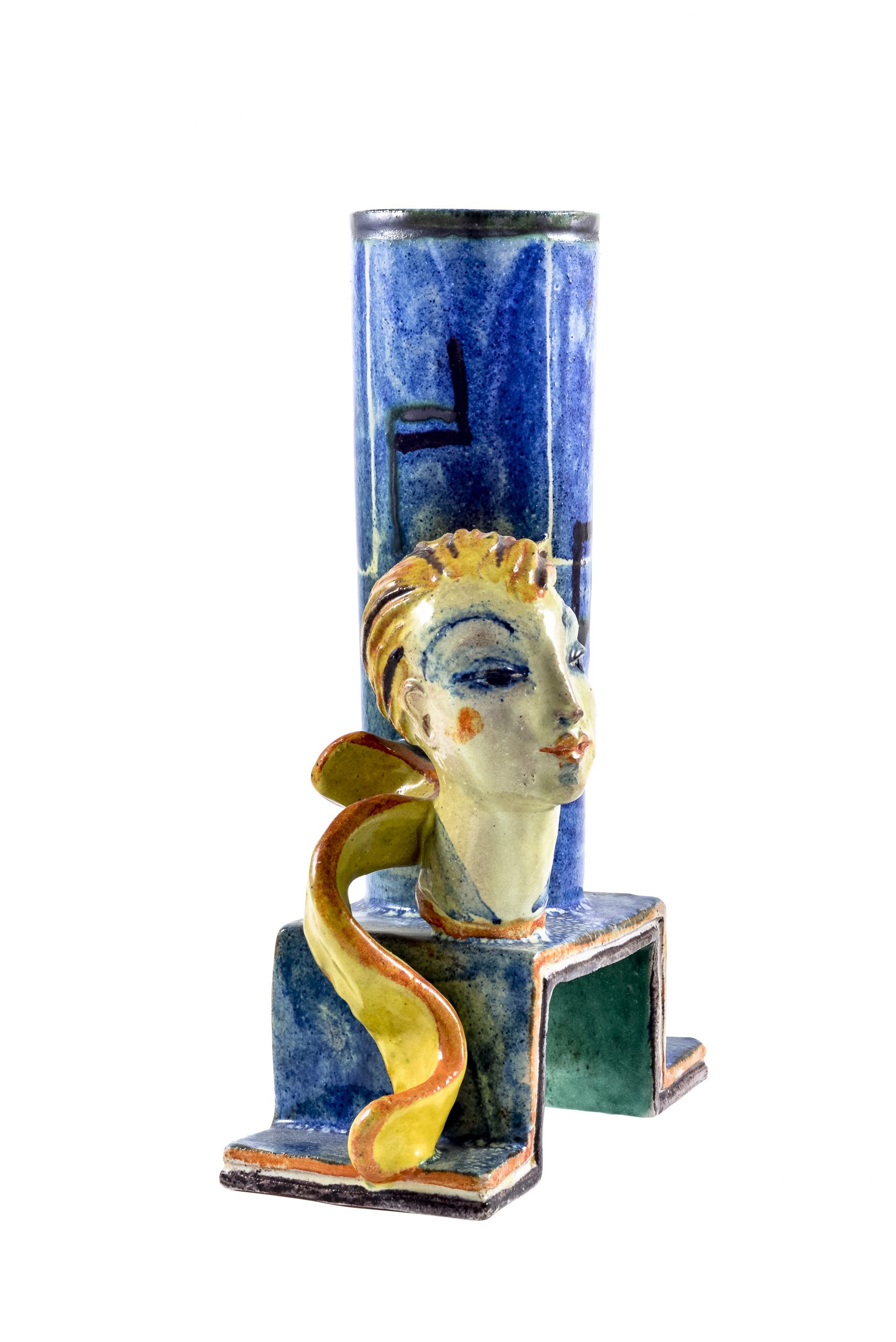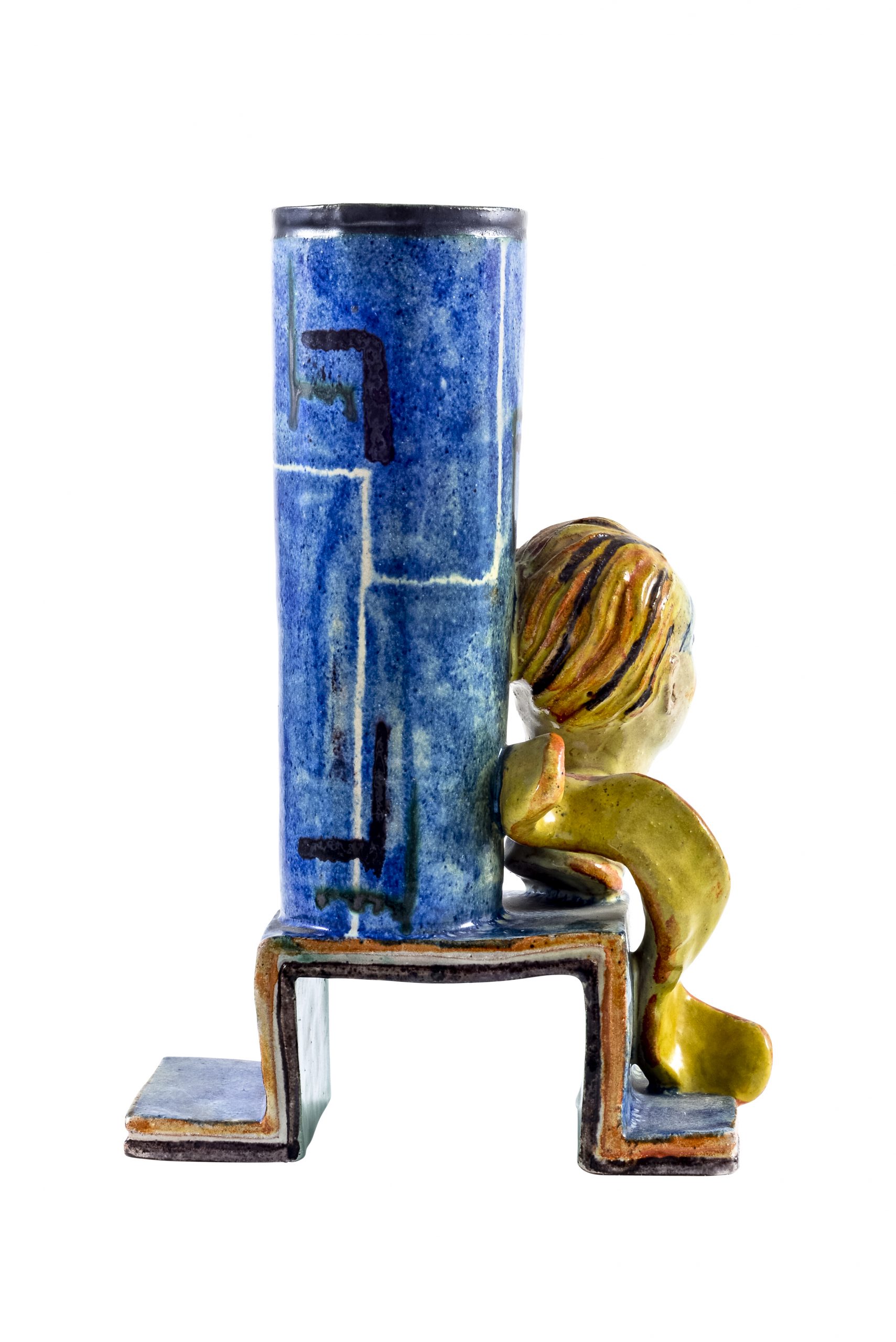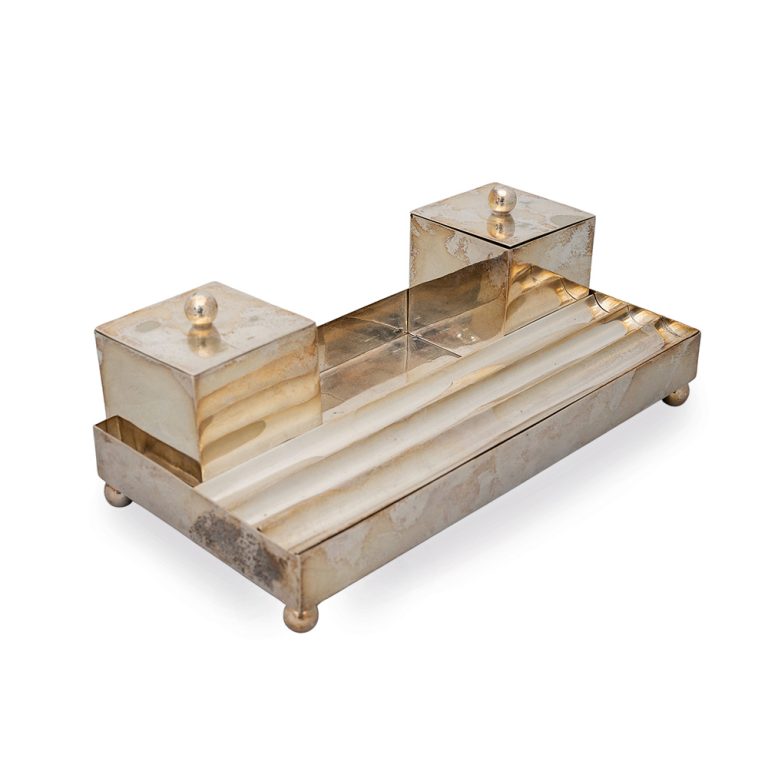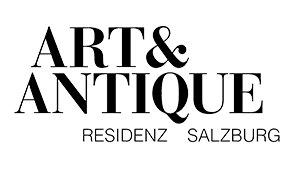Lamp stand Gudrun Baudisch Wiener Werkstatte ca. 1928
Lamp stand with expressive head, Gudrun Baudisch, Wiener Werkstatte, ca. 1928, marked
marked with “WW”, “MADE IN/AUSTRIA” in two rows, designer monogram “GB” for Gudrun Baudisch and model number „410“ Bib.: contemporary photograph in the archive of the Wiener Werkstätte in the Museum of Applied Arts Vienna, inv. No WWF 110-20-3
Description
In this ceramic object, Gudrun Baudisch combines her characteristic head depictions with a sculptural lamp base. In addition, she fuses the fine with the applied arts according to the principles of Jugendstil.
With expressive, luminous color accents she decorates the woman’s head, which is fluidly connected to the lampstand through the dynamic hair. Through the pedestal-like base, the entire object is elevated from the ground. Even without the addition of lamps, this high-quality ceramic object radiates a certain strength and decorative appeal.
ARTIST
Gudrun Baudisch (Poels 1907 – 1982 Salzburg) is considered one of the most important Austrian ceramics designer of the 20th century. In 1926, at the age of nineteen, she was accepted into the ceramics department of the Wiener Werkstätte under the direction of Vally Wieselthier. This ceramics workshop was extremely progressive. It was a space for free experimentation and artistic development. Not only art was promoted there, but also the role of women in arts and crafts.
In this forward-thinking environment, Gudrun Baudisch began designing expressive ceramic objects at a very young age. One recognizes in her work a clear continuation of the formal language and color palette of her mentor Vally Wieselthier. With her female heads, Baudisch investigates the societal perception of female beauty and its representation in art. „Baudisch’s heads […] illustrate how she carried Wieselthier’s mannerist tendencies to the extreme with exaggerated elongation; a languid, vacuous facial expression; abstract surface and three-dimensional decoration; a cropped, abrupt plasticity that lent the head an unambiguous masklike quality” as explained by Megan Brandow-Faller in her book “The Female Secession – Art and the Decorative at the Viennese Women’s Academy”*.
Baudisch created not only decorative objects, but also objects of daily use; small works of art for everyday use, in keeping with the British Arts and Crafts movement, which provided pioneering impulses for the arts and crafts of the early 20th century in Austria.
She then left the Wiener Werkstätte and founded her own ceramics workshop in Vienna in 1930. In 1935, she contributed to the Austrian pavilion for the World Exhibition in Brussels. After the Second World War, she opened her own pottery workshop in Hallstatt under the name “Keramik Hallstatt”.
* Megan Brandow-Faller, “The Female Secession – Art and the Decorative at the Viennese Women’s Academy”, The Pennsylvania State University Press, University Park Pennsylvania 2020, p.153

By sending the inquiry form, you accept the use of your data for this inquiry. Privacy Policy
1010 Wien
Monday to Friday: 11:00 a.m. – 7:00 p.m.
Saturday: 11:00 a.m. – 4:00 p.m.
and by appointment
Phone: +43 1 513 32 69
E-Mail: info@floriankolhammer.com























